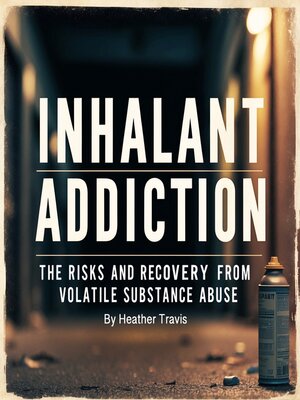Inhalant Addiction
audiobook (Unabridged) ∣ The Risks and Recovery from Volatile Substance Abuse
By Heather Travis

Sign up to save your library
With an OverDrive account, you can save your favorite libraries for at-a-glance information about availability. Find out more about OverDrive accounts.
Find this title in Libby, the library reading app by OverDrive.



Search for a digital library with this title
Title found at these libraries:
| Library Name | Distance |
|---|---|
| Loading... |
This audiobook is narrated by a digital voice.
In the aisles of every hardware store, under the sinks of countless homes, and within the cabinets of offices and schools across the world, a category of substances exists that poses one of the most overlooked yet dangerous forms of addiction. Inhalant addiction represents a unique and particularly troubling form of substance abuse that affects predominantly young people and involves the intentional inhalation of common household and industrial products to achieve intoxication. These substances, never intended for human consumption, can be found in virtually every environment where people live, work, and learn, making inhalant abuse both accessible and deadly.
The term "inhalants" encompasses a vast array of chemical substances that produce psychoactive effects when their vapors are inhaled. These substances include volatile solvents such as paint thinners, gasoline, and glue; aerosols like spray paint, deodorants, and computer keyboard cleaners; gases including butane, propane, and nitrous oxide; and nitrites such as amyl nitrite and butyl nitrite. What unites these diverse chemicals is their ability to produce rapid intoxication when inhaled, their widespread availability, and their potential to cause devastating health consequences including sudden death even on first use.
The demographics of inhalant abuse reveal disturbing patterns that distinguish it from other forms of substance abuse. While most addictive substances show peak usage rates in late adolescence or early adulthood, inhalant abuse often begins in early adolescence, with many users starting as young as twelve or thirteen years old. This early onset is partly due to the accessibility of inhalants, which do not require the social connections, financial resources, or age-related access restrictions associated with alcohol, tobacco, or illegal drugs.







